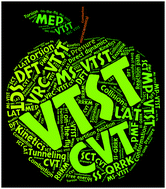Variational transition state theory: theoretical framework and recent developments
Abstract
This article reviews the fundamentals of variational transition state theory (VTST), its recent theoretical development, and some modern applications. The theoretical methods reviewed here include multidimensional quantum mechanical tunneling, multistructural VTST (MS-VTST), multi-path VTST (MP-VTST), both reaction-path VTST (RP-VTST) and variable reaction coordinate VTST (VRC-VTST), system-specific quantum Rice–Ramsperger–Kassel theory (SS-QRRK) for predicting pressure-dependent rate constants, and VTST in the solid phase, liquid phase, and enzymes. We also provide some perspectives regarding the general applicability of VTST.

- This article is part of the themed collection: Chemical reaction dynamics


 Please wait while we load your content...
Please wait while we load your content...